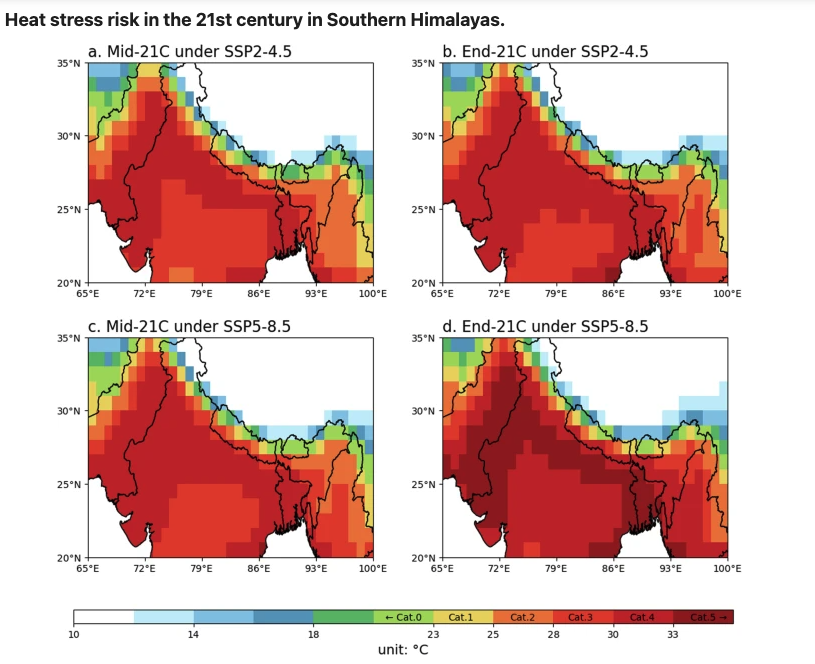Evaluating heat stress and occupational risks in the Southern Himalayas under current and future climates
Year: 2024
Published in: npj Climate and Atmospheric Science

The southern Himalayas, characterized by its dense population and hot, humid summers, are confronted with some of the world’s most severe heat stress risks. This study uses the hourly ERA5 dataset (1979–2022) and CMIP6 projections (2005–2100) to evaluate past and future heat stress based on the Wet Bulb Globe Temperature (WBGT). This has significant implications for the management of occupational workloads in the southern Himalayas. Heat stress levels are classified into 6 categories (0 to 5) using WBGT threshold intervals of 23 °C, 25 °C, 28 °C, 30 °C, and 33 °C. With heat stress surpassing level 3 for almost half of the time, people are constrained to engage in less than moderate workloads to ensure their health remains uncompromised. Flow-analogous algorithm is employed to contextualize the unprecedented heat stress case in the summer of 2020 and the associated atmospheric circulation patterns from historical and future perspectives. The results show that over 80% of the time in 2020, heat stress levels were at 3 and 4. The identified circulation pattern explains 27.6% of the extreme intensity, and such an extreme would have been nearly impossible in pre-21st-century climate conditions under the identified pattern. Future projections under SSP2-4.5 and SSP5-8.5 scenarios indicate that heat stress similar to what was experienced in 2020 will likely become a common occurrence across the southern Himalayas. Under a similar circulation pattern, the heat stress levels by the end of the 21st century would be elevated by at least one category compared to the climatic baseline in over 70% of the region, leading to an additional 120.5 (420.1) million daily population exposed to the highest heat stress level under the SSP2-4.5 (SSP5-8.5) scenario.